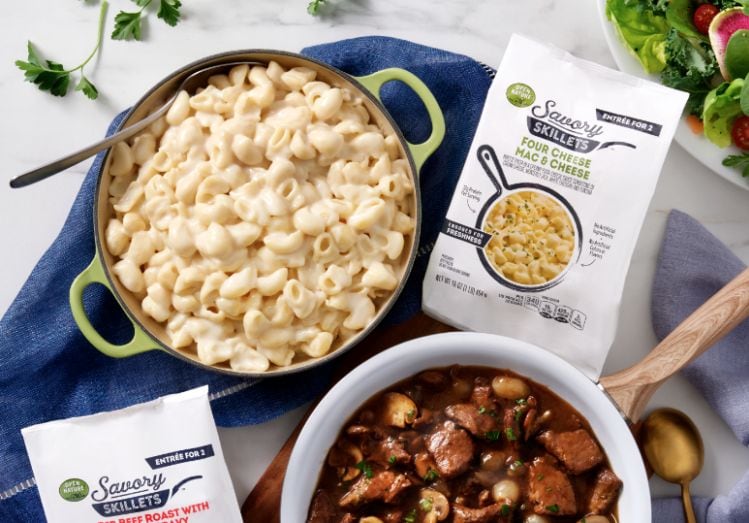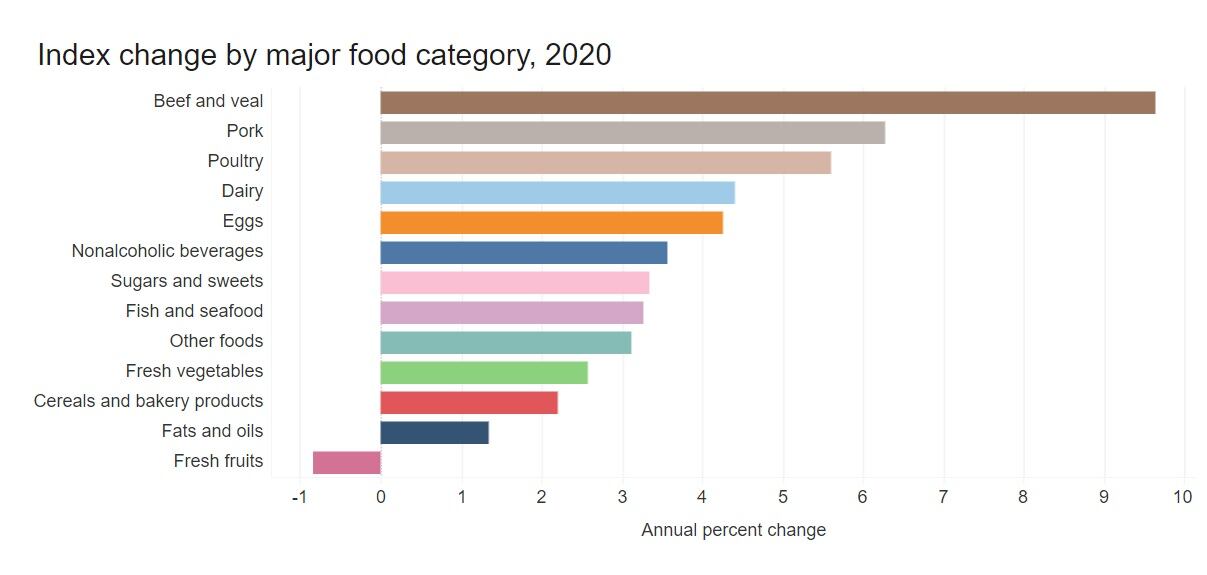However, Albertsons CEO Vivek Sankaran acknowledged this could change if inflation for food consumed at home continues to hover around or exceed the 10% year-over-year increase that the Bureau of Labor Statistics reported yesterday for March. This rate is more than double the 2-4% inflation rate that Sankaran noted earlier in the fiscal year as Albertson’s ‘sweet spot’ for passing price easily to consumers with out seeing a drop in volume sales.
Particularly susceptible to ongoing price increases are lower income consumers and those who rely on Supplemental Nutrition Assistance Program benefits, or food stamps, Sankaran said.
But the retailer isn’t seeing that, yet, Sankaran said, noting, “we’re honestly not seeing a change in behavior. We’re still seeing the consumers very strong. We’re not seeing any meaningful trade down.”
Indeed, the company reported identical sales increased 7.5% in its fourth quarter ending Feb. 26 compared to the same time last year and is up 19.3% on a two-year stack. Digital sales also are up 5% year-over-year and 287% over two years, according to the company.
“We also gained unit and dollar market share in food … on both a one and two-year basis, and maintained our No. 1 and No. 2 position in” most of the regions in which Albertsons operates, Sankaran said.
The retailer also touted strong net sales and revenues up 10.2% to $17.38b in the quarter, helping to lift its top line 2.2%, despite increasing inflation in the high single digits that is hitting the retailer just as it is manufacturers and consumers.
“We are managing inflation very, very well,” Sankaran said. “We’re trying to optimize our selection and make sure we’re competitive. And the way we measure that is market share, dollar gains and unit share both in food and fuel, and we’ve got a nice track record.”
Preparing for lower spend
The company isn’t so naïve though as to bank on elasticities remaining at historic levels if inflation remains high or continues to creep up, Sankaran said, noting that he expects inflation will remain high at least through September, at which point he predicts it will begin to level out.
Rather, Sankaran said, he expects that lower income consumers and those who are dependent on SNAP will reduce some spend in the coming months. And in those cases, he said, the retailer is prepared.
Albertsons is working hard to diversify its product mix, including selection of less expensive private label options, to support financially strained consumers and retain their loyalty in a worse case inflation scenario. This is also part of the retailer’s broader initiative to attract and retain more loyal consumers.
“I would expect private label to become a bigger and bigger part of the consumer’s basket only because we are offering better opening price points,” and if inflation holds “it will become a bigger and bigger initiative in our growth in gross margins,” Sankaran said.
The retailer also is preparing to counter consumer temptation to pull back on spending as prices rise by offering “very, very specific, personalized promotions” that are “extremely granular and extremely surgical,” rather than the old approach of promoting sales on the front page to attract everybody, Sankaran said.
Fiscal 2022 outlook
Taking into account Albertsons’ strategy for managing inflation as well as other macro-level challenges, such as supply chain constraints and ongoing labor negotiations, the company is still optimistic about the upcoming fiscal year.
It predicts identical sales in fiscal 2022 will climb 2-3% and adjusted EBITDA in the range of $4.15b to $4.25bn. It also is projecting a net income per share in the range of $2.70 to $2.85 per share.
Ultimately, Sankaran said, he is pleased with the company’s 2021 results and its momentum.
“Our strategy is working, and we are executing well against industrywide pressures. And the transformation we began before the pandemic significantly strengthened our company,” he said.




